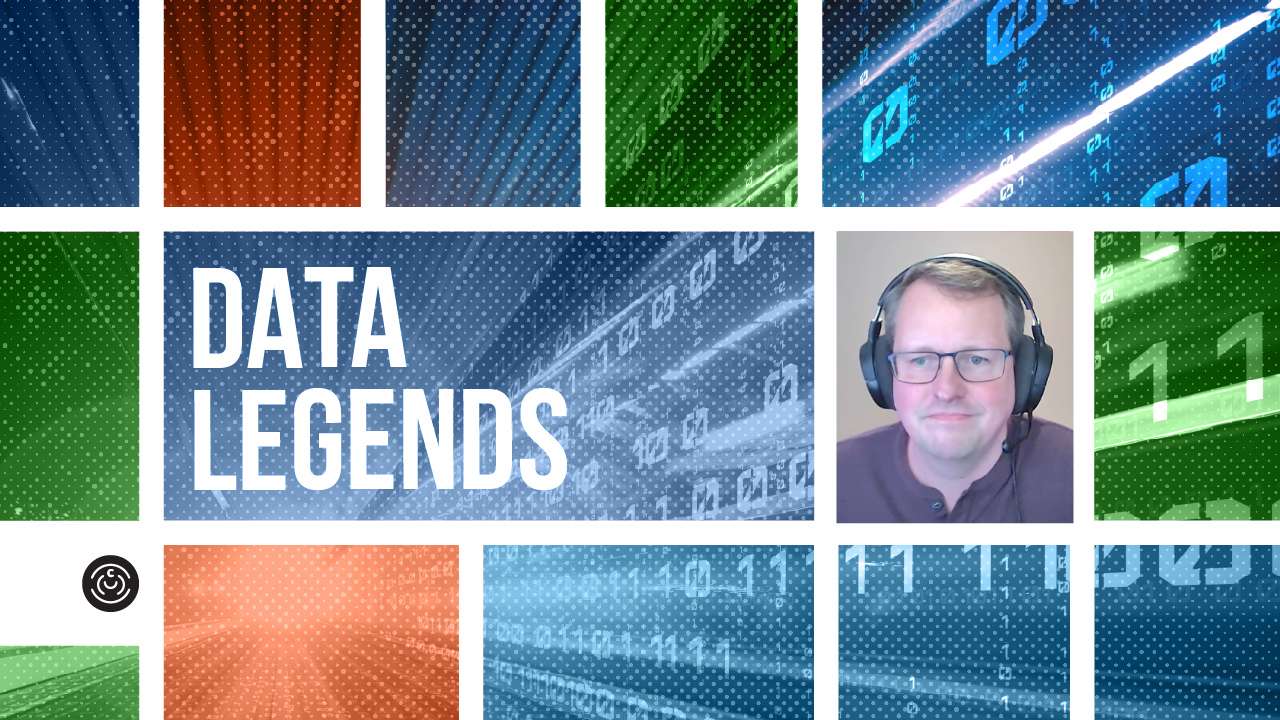Employing Foundational Tools to Implement Unified Solutions in IT
Whether it’s for capability or speed, your legacy systems will need to be replaced at some point. But how you handle that transition will determine your overall success.
If you’re not careful, you might end up dealing with two separate systems.

On a recent episode of Data Legends, we spoke with Robert Cooke, CTO & Founder of 3Forge, to hear his perspective on the data & analytics trends of today, the challenge of balancing an increase in IT costs with a reduction in budget, and the process of creating IT solutions that parallel the direction of the market, and more.
Ready to learn from a data legend? Let’s dive in!
2 Big trends in data & analytics
With a multitude of years spent in financial services, at tech companies, and in consultative roles, Robert has no shortage of expertise. So, we took the opportunity to ask him about the macro trends he is seeing in data and analytics.
“People want unified solutions that cut across all of these siloed automations.” — Robert Cooke
Unified solutions
In the early 2000s, people working in IT enthusiastically embraced the prospect of automation. The directive from leadership was clear: Take every single thing done manually and automate it.
The benefits were there. Automation made companies more efficient, more responsive, and more profitable. But there were also unintended consequences.
Namely, companies ended up with a sprawl of siloed solutions.
A big trend today, according to Robert, is “taking those siloed solutions and building a unified solution on top of it, or at least from the end user’s perspective, providing a unified solution.”
APAC market
Today, opportunities and demand for development work no longer exist solely in the US and in Europe. They are exploding across Asian markets.
“We’re seeing a truly global effort,” Robert says.
And as part of this global effort, companies want someone monitoring and watching their systems at all times. They’re embracing the follow the sun model, in which workflows and issues are passed between offices in different time zones to increase productivity and reduce any delays.
Balancing an increase in IT costs with a reduction in budget
IT costs used to account for a small percentage of the balance sheet. Today, however, they are one of the larger costs for organizations (in some companies, they occupy 40-60% of the balance sheet).
“While the cost of IT 25 years ago was pretty small on the balance sheet. Now, it's an overwhelming factor.” — Robert Cooke
To cut costs, Robert believes that we need to bring a data-agnostic mentality to the industry.
“I think it’s about looking for the commonalities in these problems and trying to find platforms and solutions that can be leveraged across a series of problems, as opposed to getting bespoke solutions that just solve one little problem,” he says.
By taking that approach, you can build up broader expertise for that solution and start building libraries and tools that can be used across your organization.
“You cut costs by thinking about your problems as opportunities to utilize building blocks and reuse those building blocks as much as possible.”
Replacing old systems with new systems
One strategy is to look at it from a pure cost perspective and replace the legacy system that’s costing the most money.
However, there is a danger that goes along with completely replacing a legacy system: If you don’t do it correctly, you might end up with two systems, which in many cases is a worse problem to have.
That’s why Robert prefers to follow the building block method—leave the systems where they are and build a unified solution on top of them.
If that isn’t feasible—maybe for compliance or performance reasons—and you must replace a legacy system outright, Robert recommends certain tools to do it effectively.
“This is where a whole series of tools come into play here around reconciliation,” he says. “During migration and slightly before and slightly after, you want to have good reconciliation tools to look between them, because at the end of the day, the data probably should look pretty similar as an output between the two.”
The key here is setting up the infrastructure for the change first before charging headlong into replacing an old system with a new one.
Creating IT solutions
The question on every IT leader’s mind: How do you design IT solutions that are resonant and scalable, and that align with where the market is going?
Robert believes it starts with aiming solutions at a hybrid world. You need to have a pathway to the cloud.
“Whether or not you decide to be in the cloud tomorrow, you need to start building a path to get that data from your internal systems into the cloud.” — Robert Cooke
Once again, recon tools play an important role. They give you peace of mind as you take all that data running through your internal systems and migrate them to the cloud.
The solutions we create today will need to adhere to the data-agnostic, building block approach, according to Robert.
Gone are the days where customers will bring on a solution that is purpose-built to solve one small problem. Today, people are looking for solutions that will give them the greatest efficiency across their team as they scale.
More information about Robert and today’s topics:
- LinkedIn Profile: https://www.linkedin.com/in/robert-cooke-a7835b69/#experience
- Company Website: https://3forge.com/products.html
To make sure you never miss an episode of Data Legends: Stories from the IT Trenches, follow on Google, Apple Podcasts, Spotify, our website, or anywhere you get podcasts.
Additional Resources
Read the Blog: Choosing an Analytical Cloud Data Platform
Watch the Webinar: Advanced Analytics - Data Architecture Best Practices for Advanced Analytics
Check out the Whitepaper: Ultimate Guide to Log Analytics: 5 Criteria to Evaluate Tools





